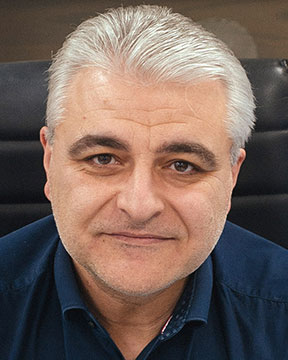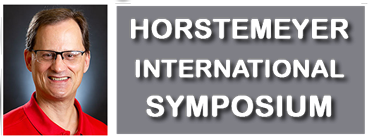

























| SESSION: EnergyMonAM-R11 | Mauntz International Symposium (7th Intl. Symp. on Sustainable Energy Production: Fossil; Renewables; Nuclear; Waste handling , processing, & storage for all energy production technologies; Energy conservation) |
| Mon. 28 Nov. 2022 / Room: Game | |
| Session Chairs: Leendert Florusse; Session Monitor: TBA | |
The requirements in the power generation with biogas, gas and diesel engines rise. Ever more flexibility at a maximum operational reliability and a long-life time are required of them at the same time, so the requirements for the oil and the oil condition monitoring grow correspondingly. This presentation provides information about an online oil condition monitoring system to give a solution to the mentioned priorities. The focus is set to the detection of contamination effects in contrast to oil changes in gearboxes where the additive degradation is the dominating effect.
The online oil sensor system measures the components conductivity, the relative permittivity and the temperature independently from each other. Based on a very sensitive measurement method with high accuracy even small changes in the conductivity and dielectric constant of the oil composition can be detected reliably. The sensor system effectively controls the proper operation conditions of the engines and gearboxes instantaneously signals any kind of abnormal parameter change.
The system enables damage prevention of the engine by an advanced warning time of critical operation conditions and an enhanced oil exchange interval realized by a precise measurement of the electrical conductivity, the relative permittivity and the oil temperature. The WearSens® Index (WSi) which has been successfully implemented in wind power gearbox applications is quite flexible and can be adjusted to the engine monitoring as well. The mathematical model of the WSi combines all measured values and its gradients in one single parameter for a comprehensive monitoring to prevent the asset from expensive damage. Furthermore, the WSi enables a long-term prognosis on the next oil change by 24/7 server data logging. Corrective procedures and/or maintenance can be carried out before actual damage occurs. Raw data and WSi results of a landfill gas engine installation is shown. Short-term and long-term analysis of the data show significant trends and events, which are discussed more in detail.
24/7 monitoring of the system during operation enables specific preventive and condition-based maintenance and independent of rigid inspection intervals.
References:
[1] Gegner, J., Kuipers, U. and Mauntz, M.: Ölsensorsystem zur Echtzeitzustands-überwachung von technischen Anlagen und Maschinen, Technisches Messen 77, pp. 283-292, (2010)
[2] Mauntz, M., Gegner J., Klingauf S. and Kuipers U.: Continuous Wear Measurement in Tribological Systems to Control Operational Wear Damage with a new Online Oil Sensor System, TAE Technische Akademie Esslingen, 19th International Colloquium Tribology, Esslingen, January 21-23, 2014, (2014)
[3] Mauntz, M., Kuipers, U. and Peuser, J.: Continuous, online detection of critical operation conditions and wear damage with a new oil condition monitoring system, WearSens®, 14th International Conference on Tribology - SERIATRIB ’15 Proceedings, Belgrad, Serbian Tribology Society Kragujevac, University of Belgrade, Faculty of Mechanical Engineering, Belgrade, ISBN: 978-86-7083-857-4, S. 283-288, (2015)
[4] Mauntz, M., Kuipers, U. and Peuser, J.: New oil condition monitoring system, WearSens® enables continuous, online detection of critical operating conditions and wear damage, Malaysian International Tribology Conference 2015 - MITC2015, Penang, Malaysia on November 16-17, 2015, Conference Proceedings, ISBN: <span class="fon_main_wrapper"><span phone-source="978-967-13625" class="fon-phone-wrap fon-hightlighted active-call" id="fon-phone-L2sMWeeiqh">978-967-13625</span><a phone-source="978-967-13625" href="#" class="fonCallLinkButton active-call"><img src="data:image/png;base64,iVBORw0KGgoAAAANSUhEUgAAABAAAAAQCAMAAAAoLQ9TAAADAFBMVEUAAACfn58+u2cGBgb+/f3H69LHx8fPzc2hoaHI7NMer0wns1SioqLDwMAfsE3u7e0JCQlWVlZ9fX3o9u3T8t3v7u6kpKTx8fHU894LCwvNzc1YWFilpaXW09MMDAzz8/PY1dXNzc3Nzc2K1qKC05yC05319fXL7db////29vYZrUh70Zc2NjaDg4PPzc1dXV3z8fHMysqrq6v08vLY1dUSEhL5+fmc3LGU2arEwcE7uWTU1NTU0dH7+/v3/vmIiIhiYmLDw8PT09P9/f0crkuKior+/v7p+u6Li4v28vQVrEb///8esEwNqT8/Pz/U0dGNjY1nZ2fOy8u2trbQ7tmQkJCA0ppERESRkZHJ7NXb2dnv7e4QqkFtbW3t7Ozq6Ojw7u7y8fHLyspISEiVlZX08/OD053X09OYmJjl5eXE6tCZmZkrtFdzc3PAwMAAAAAbrkr08fLZ2Nibm5v7+vqdnZ2e3bLRz88AAAAAAAAAAAAAAAAAAAAAAAAAAAAAAAAAAAAAAAAAAAAAAAAAAAAAAAAAAAAAAAAAAAAAAAAAAAAAAAAAAAAAAAAAAAAAAAAAAAAAAAAAAAAAAAAAAAAAAAAAAAAAAAAAAAAAAAAAAAAAAAAAAAAAAAAAAAAAAAAAAAAAAAAAAAAAAAAAAAAAAAAAAAAAAAAAAAAAAAAAAAAAAAAAAAAAAAAAAAAAAAAAAAAAAAAAAAAAAAAAAAAAAAAAAAAAAAAAAAAAAAAAAAAAAAAAAAAAAAAAAAAAAAAAAAAAAAAAAAAAAAAAAAAAAAAAAAAAAAAAAAAAAAAAAAAAAAAAAAAAAAAAAAAAAAAAAAAAAAAAAAAAAAAAAAAAAAAAAAAAAAAAAAAAAAAAAAAAAAAAAAAAAAAAAAAAAAAAAAAAAAAAAAAAAAAAAAAAAAAAAAAAAAAAAAAAAAAAAAAAAAAAAAAAAAAAAAAAAAAAAAAAAAAAAAAAAAAAAAAAAAAAAAAAAAAAAAAAAAAAAAAAAAAAAAAAAAAAAAAAAAAlXTQeAAABAHRSTlMA////////////////////////////////////////////////////////////////////////////////////////////////////////////////////////////////////////////////////////////////////////////////////////////////////////////////////////////////////////////////////////////////////////////////////////////////////////////////////////////////////////////////////Cpf0PAAAAAlwSFlzAAAXEgAAFxIBZ5/SUgAAAAd0SU1FB94KAQ0qFGuFIz0AAAAHdEVYdEF1dGhvcgCprsxIAAAADHRFWHREZXNjcmlwdGlvbgATCSEjAAAACnRFWHRDb3B5cmlnaHQArA/MOgAAAA50RVh0Q3JlYXRpb24gdGltZQA19w8JAAAACXRFWHRTb2Z0d2FyZQBdcP86AAAAC3RFWHREaXNjbGFpbWVyALfAtI8AAAAIdEVYdFdhcm5pbmcAwBvmhwAAAAd0RVh0U291cmNlAPX/g+sAAAAIdEVYdENvbW1lbnQA9syWvwAAAAZ0RVh0VGl0bGUAqO7SJwAAAF9JREFUGJVjCBfKRYbhDEIsLFkSLHCQCxJgKkMICEEFxJ2cnDKRBYJNBcOF7JAFdNG0BMc6RaFpSQ7PZcGrRQhdIBdNgJ0RTQDVpdqoAuIswuJAlh0I2YkLMYTHooBcALNHHdnKWUyEAAAAAElFTkSuQmCC" alt="F"/></a></span>-0-1, S. 179-180, (2015)
| SESSION: EnergyMonAM-R11 | Mauntz International Symposium (7th Intl. Symp. on Sustainable Energy Production: Fossil; Renewables; Nuclear; Waste handling , processing, & storage for all energy production technologies; Energy conservation) |
| Mon. 28 Nov. 2022 / Room: Game | |
| Session Chairs: Leendert Florusse; Session Monitor: TBA | |
A new oil sensor system is presented for the continuous, online measurement of the wear in industrial gears, turbines, generators, transformers and hydraulic systems. The detection of change is much earlier than existing technologies such as particle counting or vibration measurement. Thus, targeted, corrective procedures and/or maintenance can be carried out before actual damage occurs. Efficient machine utilization, accurately timed preventive maintenance, a reduction of downtime and an increased service life can all be achieved.
The oil sensor system measures the components of the complex impedances X of the oils, in particular the electrical conductivity, the relative dielectric constant and the oil temperature.
Inorganic compounds occur at contact surfaces from the wear of parts, broken oil molecules, acids or oil soaps. These all lead to an increase in the electrical conductivity, which correlates directly with the wear. In oils containing additives, changes in dielectric constant infer the chemical breakdown of additives. A reduction in the lubricating ability of the oils, the determination of impurities, the continuous evaluation of the wear of bearings and gears and the oil aging all together follow the holistic approach of real-time monitoring of changes in the oil-machine system. By long-term monitoring and continuous analysis of the oil quality, it is possible to identify the optimal time interval of the next oil exchange – condition based.
References:
[1] Gegner, J., Kuipers, U. and Mauntz, M.: Ölsensorsystem zur Echtzeit-Zustandsüberwachung von technischen Anlagen und Maschinen, Technisches Messen 77, pp. 283-292, (2010)
[2] Mauntz, M., Gegner J., Klingauf S. and Kuipers U.: Continuous Wear Measurement in Tribological Systems to Control Operational Wear Damage with a new Online Oil Sensor System, TAE Technische Akademie Esslingen, 19th International Colloquium Tribology, Esslingen, January 21-23, 2014, (2014)
[3] Mauntz, M., Kuipers, U. and Peuser, J,: Continuous, online detection of critical operation conditions and wear damage with a new oil condition monitoring system, WearSens®, 14th International Conference on Tribology - SERIATRIB ’15 Proceedings, Belgrad, Serbian Tribology Society Kragujevac, University of Belgrade, Faculty of Mechanical Engineering, Belgrade, ISBN: 978-86-7083-857-4, S. 283-288, (2015)
[4] Mauntz, M., Kuipers, U. and Peuser, J.: New oil condition monitoring system, WearSens® enables continuous, online detection of critical operating conditions and wear damage, Malaysian International Tribology Conference 2015 - MITC2015, Penang, Malaysia on November 16-17, 2015, Conference Proceedings, ISBN: <span class="fon_main_wrapper"><span phone-source="978-967-13625" class="fon-phone-wrap fon-hightlighted active-call" id="fon-phone-3O8aWYjg4T">978-967-13625</span><a phone-source="978-967-13625" href="#" class="fonCallLinkButton active-call"><img src="data:image/png;base64,iVBORw0KGgoAAAANSUhEUgAAABAAAAAQCAMAAAAoLQ9TAAADAFBMVEUAAACfn58+u2cGBgb+/f3H69LHx8fPzc2hoaHI7NMer0wns1SioqLDwMAfsE3u7e0JCQlWVlZ9fX3o9u3T8t3v7u6kpKTx8fHU894LCwvNzc1YWFilpaXW09MMDAzz8/PY1dXNzc3Nzc2K1qKC05yC05319fXL7db////29vYZrUh70Zc2NjaDg4PPzc1dXV3z8fHMysqrq6v08vLY1dUSEhL5+fmc3LGU2arEwcE7uWTU1NTU0dH7+/v3/vmIiIhiYmLDw8PT09P9/f0crkuKior+/v7p+u6Li4v28vQVrEb///8esEwNqT8/Pz/U0dGNjY1nZ2fOy8u2trbQ7tmQkJCA0ppERESRkZHJ7NXb2dnv7e4QqkFtbW3t7Ozq6Ojw7u7y8fHLyspISEiVlZX08/OD053X09OYmJjl5eXE6tCZmZkrtFdzc3PAwMAAAAAbrkr08fLZ2Nibm5v7+vqdnZ2e3bLRz88AAAAAAAAAAAAAAAAAAAAAAAAAAAAAAAAAAAAAAAAAAAAAAAAAAAAAAAAAAAAAAAAAAAAAAAAAAAAAAAAAAAAAAAAAAAAAAAAAAAAAAAAAAAAAAAAAAAAAAAAAAAAAAAAAAAAAAAAAAAAAAAAAAAAAAAAAAAAAAAAAAAAAAAAAAAAAAAAAAAAAAAAAAAAAAAAAAAAAAAAAAAAAAAAAAAAAAAAAAAAAAAAAAAAAAAAAAAAAAAAAAAAAAAAAAAAAAAAAAAAAAAAAAAAAAAAAAAAAAAAAAAAAAAAAAAAAAAAAAAAAAAAAAAAAAAAAAAAAAAAAAAAAAAAAAAAAAAAAAAAAAAAAAAAAAAAAAAAAAAAAAAAAAAAAAAAAAAAAAAAAAAAAAAAAAAAAAAAAAAAAAAAAAAAAAAAAAAAAAAAAAAAAAAAAAAAAAAAAAAAAAAAAAAAAAAAAAAAAAAAAAAAAAAAAAAAAAAAAAAAAAAAAAAAAAAAAAAAAAAAAAAAAAAAAAAAAAAAAAAAAAAAAAAAAAAAAAAAAAAAAAAAlXTQeAAABAHRSTlMA////////////////////////////////////////////////////////////////////////////////////////////////////////////////////////////////////////////////////////////////////////////////////////////////////////////////////////////////////////////////////////////////////////////////////////////////////////////////////////////////////////////////////Cpf0PAAAAAlwSFlzAAAXEgAAFxIBZ5/SUgAAAAd0SU1FB94KAQ0qFGuFIz0AAAAHdEVYdEF1dGhvcgCprsxIAAAADHRFWHREZXNjcmlwdGlvbgATCSEjAAAACnRFWHRDb3B5cmlnaHQArA/MOgAAAA50RVh0Q3JlYXRpb24gdGltZQA19w8JAAAACXRFWHRTb2Z0d2FyZQBdcP86AAAAC3RFWHREaXNjbGFpbWVyALfAtI8AAAAIdEVYdFdhcm5pbmcAwBvmhwAAAAd0RVh0U291cmNlAPX/g+sAAAAIdEVYdENvbW1lbnQA9syWvwAAAAZ0RVh0VGl0bGUAqO7SJwAAAF9JREFUGJVjCBfKRYbhDEIsLFkSLHCQCxJgKkMICEEFxJ2cnDKRBYJNBcOF7JAFdNG0BMc6RaFpSQ7PZcGrRQhdIBdNgJ0RTQDVpdqoAuIswuJAlh0I2YkLMYTHooBcALNHHdnKWUyEAAAAAElFTkSuQmCC" alt="F"/></a></span>-0-1, S. 179-180, (2015)
| SESSION: EnergyMonAM-R11 | Mauntz International Symposium (7th Intl. Symp. on Sustainable Energy Production: Fossil; Renewables; Nuclear; Waste handling , processing, & storage for all energy production technologies; Energy conservation) |
| Mon. 28 Nov. 2022 / Room: Game | |
| Session Chairs: Leendert Florusse; Session Monitor: TBA | |
The requirements for renewable energy for high voltage transformers and large industrial gearboxes as installed in wind turbines on-/offshore rise. Ever more flexibility at maximum operational reliability and a long lifetime is required of them at the same time, so the requirements for the oil and the oil condition monitoring grow correspondingly. This presentation provides information about a novel online oil condition monitoring system to give a solution to the mentioned priorities for both energy sectors. The focus is set to high voltage transformers but the possibilities in monitoring applications of lubrication oils in hybrid applications (electrical vehicles) are also addressed.
The online oil sensor system measures the conductivity kappa, the relative permittivity epsilon r and the temperature T independently from each other. Based on a very sensitive measurement method with high accuracy, even small changes in the conductivity and dielectric constant of the oil composition can be detected reliably. The new sensor system effectively controls the proper operating conditions of high-voltage transformers, industrial gearboxes and in test rigs for electrical vehicles, where lubrication and isolation of the oil have a double function.
The system enables damage prevention of the high voltage transformer by an advanced warning time of critical operation conditions and parameter trending realized by a precise measurement of the electrical conductivity, the relative permittivity, loss factor tan delta and oil temperature based on a high time resolution. Corrective procedures and/or maintenance can be carried out before actual damage occurs.
Once the oil condition monitoring sensor systems are installed on the high voltage transformer or an oil regeneration plant, the measured data can be displayed and evaluated elsewhere in sense of a full online condition monitoring system.
24/7 monitoring of the system during operation enables specific preventive and condition-based maintenance independent of rigid inspection intervals.
References:
[1] P. Tchakoua, R. Wamkeue, M. Ouhrouche, F.S. Hasnaoui, T.A. Tameghe, G. Ekemb: Wind Turbine Condition Monitoring: State-of-the-Art Review, New Trends, and Future Challenges, Energies 2014,7, pp. 2595-2630, (2014).
[2] M. Mauntz and U. Kuipers: Ölsensorsystem- Sensorsystem zur Messung von Komponenten der komplexen Impedanz elektrisch gering leitender und nichtleitender Fluide, dessen Realisierung und Anwendung, patent application no. 10 <span class="fon_main_wrapper"><span phone-source="2008 047 366" class="fon-phone-wrap fon-hightlighted active-call" id="fon-phone-UNoowb0V6l">2008 047 366</span><a phone-source="2008 047 366" href="#" class="fonCallLinkButton active-call"><img src="data:image/png;base64,iVBORw0KGgoAAAANSUhEUgAAABAAAAAQCAMAAAAoLQ9TAAADAFBMVEUAAACfn58+u2cGBgb+/f3H69LHx8fPzc2hoaHI7NMer0wns1SioqLDwMAfsE3u7e0JCQlWVlZ9fX3o9u3T8t3v7u6kpKTx8fHU894LCwvNzc1YWFilpaXW09MMDAzz8/PY1dXNzc3Nzc2K1qKC05yC05319fXL7db////29vYZrUh70Zc2NjaDg4PPzc1dXV3z8fHMysqrq6v08vLY1dUSEhL5+fmc3LGU2arEwcE7uWTU1NTU0dH7+/v3/vmIiIhiYmLDw8PT09P9/f0crkuKior+/v7p+u6Li4v28vQVrEb///8esEwNqT8/Pz/U0dGNjY1nZ2fOy8u2trbQ7tmQkJCA0ppERESRkZHJ7NXb2dnv7e4QqkFtbW3t7Ozq6Ojw7u7y8fHLyspISEiVlZX08/OD053X09OYmJjl5eXE6tCZmZkrtFdzc3PAwMAAAAAbrkr08fLZ2Nibm5v7+vqdnZ2e3bLRz88AAAAAAAAAAAAAAAAAAAAAAAAAAAAAAAAAAAAAAAAAAAAAAAAAAAAAAAAAAAAAAAAAAAAAAAAAAAAAAAAAAAAAAAAAAAAAAAAAAAAAAAAAAAAAAAAAAAAAAAAAAAAAAAAAAAAAAAAAAAAAAAAAAAAAAAAAAAAAAAAAAAAAAAAAAAAAAAAAAAAAAAAAAAAAAAAAAAAAAAAAAAAAAAAAAAAAAAAAAAAAAAAAAAAAAAAAAAAAAAAAAAAAAAAAAAAAAAAAAAAAAAAAAAAAAAAAAAAAAAAAAAAAAAAAAAAAAAAAAAAAAAAAAAAAAAAAAAAAAAAAAAAAAAAAAAAAAAAAAAAAAAAAAAAAAAAAAAAAAAAAAAAAAAAAAAAAAAAAAAAAAAAAAAAAAAAAAAAAAAAAAAAAAAAAAAAAAAAAAAAAAAAAAAAAAAAAAAAAAAAAAAAAAAAAAAAAAAAAAAAAAAAAAAAAAAAAAAAAAAAAAAAAAAAAAAAAAAAAAAAAAAAAAAAAAAAAAAAAAAAAAAAAAAAAAAAAAAAAAAAAAAAlXTQeAAABAHRSTlMA////////////////////////////////////////////////////////////////////////////////////////////////////////////////////////////////////////////////////////////////////////////////////////////////////////////////////////////////////////////////////////////////////////////////////////////////////////////////////////////////////////////////////Cpf0PAAAAAlwSFlzAAAXEgAAFxIBZ5/SUgAAAAd0SU1FB94KAQ0qFGuFIz0AAAAHdEVYdEF1dGhvcgCprsxIAAAADHRFWHREZXNjcmlwdGlvbgATCSEjAAAACnRFWHRDb3B5cmlnaHQArA/MOgAAAA50RVh0Q3JlYXRpb24gdGltZQA19w8JAAAACXRFWHRTb2Z0d2FyZQBdcP86AAAAC3RFWHREaXNjbGFpbWVyALfAtI8AAAAIdEVYdFdhcm5pbmcAwBvmhwAAAAd0RVh0U291cmNlAPX/g+sAAAAIdEVYdENvbW1lbnQA9syWvwAAAAZ0RVh0VGl0bGUAqO7SJwAAAF9JREFUGJVjCBfKRYbhDEIsLFkSLHCQCxJgKkMICEEFxJ2cnDKRBYJNBcOF7JAFdNG0BMc6RaFpSQ7PZcGrRQhdIBdNgJ0RTQDVpdqoAuIswuJAlh0I2YkLMYTHooBcALNHHdnKWUyEAAAAAElFTkSuQmCC" alt="F"/></a></span>.9, German Patent Office, Munich, (2008).
[3] M. Mauntz and U. Kuipers: Verfahren, Schaltungsanordnung, Sensor zur Messung physikalischer Größen in Fluiden sowie deren Verwendung, European patent application no. EP 09000244, European Patent Office, Munich, (2009).
[4] M. Mauntz, J. Gegner and U. Kuipers: Ölsensorsystem zur Echtzeit-Zustandsüberwachung von technischen Anlagen und Maschinen, Technisches Messen 77, pp. 283-292, (2010).
| SESSION: EnergyMonPM2-R11 | Mauntz International Symposium (7th Intl. Symp. on Sustainable Energy Production: Fossil; Renewables; Nuclear; Waste handling , processing, & storage for all energy production technologies; Energy conservation) |
| Mon. 28 Nov. 2022 / Room: Game | |
| Session Chairs: Leo Eskin; Session Monitor: TBA | |
Hydrogen fuel cells are among the most promising devices for powering vehicles and are expected to soon become a major technology that will help us reduce greenhouse gas emission. In order to provide hydrogen to vehicles, a robust process-oriented analytical solution is required to properly certify its quality. ASDevices have spent the last 4 years developing a complete portfolio of technology for this very application.
Over the past years, ASDevices established itself as the experts in process-oriented ultra-trace analysis of permanent gases and NMHC in various matrices, including hydrogen. For sulfur analysis, detectors such as Sulfur Chemiluminescence Detectors (SCD) or Pulsed Flame Photometric Detectors (PFPD) have been traditionally used. However, due to their complexity, need for maintenance and use of hazardous gases such as ozone, these instruments are not adapted for continuous process monitoring and are limited to laboratory testing. More recently, ASDevices developed a robust method for the measurement of sulfur compounds using the Epd technology in combination with the iMov GC platform without the need of a sample concentrator.
Thanks to the high sensitivity of the Epd technology, sub-ppb level limits of detection have been achieved for the permanent gases, NMHC and sulfur compounds. Therefore, an explosionproof version of the iMov GC platform was designed and was configured to combine these analyzes, making it the first process-oriented instrument combining the analysis of permanent gases, NMHC and sulfur compounds in fuel-grade hydrogen.
The presentation will cover the various technologies and the results obtained from ASDevices solution which was installed at the Sinopec Yanshan plants that will generate H2 for the 2022 winter Olympics.
References:
[1] James G. Speight. Synthesis Gas and the Fischer-Tropsch Process, The Refinery of the Future (Second Edition), 2020.
[2] National Renewable Energy Laboratory. Blending Hydrogen into Natural Gas Pipeline Networks: A Review of Key Issues, 2013.
[3] US Department of Energy. Hydrogen Fuel Quality Specifications for Fuel Cells in Road Vehicles, 2016.
[4] Alberta Environment. Assessment Report on Reduced Sulfur Compounds for Developing Ambient Air Quality Objectives, 2004.
[5] WHO. Hydrogen sulfide. Environmental health criteria No. 19, WHO, Geneva, 1981.
[6] International Society of Beverage Technologists. Carbon Dioxide Quality Guidelines, Food Safety Magazine, 2000.
[7] A. S. Brown, et al. Methods for the Analysis of Trace-Level Contaminants in Hydrogen for Fuel Cells Applications, NPL Reports AS 64, 2011.
[8] R. L. Shearer. Development of Flameless Sulfur Chemiluminescence Detection: Application to Gas Chromatography, Anal. Chem., 1992, 64, 2192-2196
[9] Chromedia Analytical Sciences. FPD : Flame Photometric Detector, accessed January 2022.
[10] ASDevices. AN-09 – Trace-Level Measurement of Sulfur-Based Compounds in Hydrogen with the Epd Technology, 2019.
[11] ASDevices. AN-15 – Trace Sulfur in H2 Analysis Without SCD, FPD and Thermal Desorber, A Process GC Solution – KA8000plus Sulfurs in Fuel-Grade H2 Test Report, 2020.
[12] C. Xu et al. Analytical Progress of Trace Impurities in Hydrogen for Fuel Cell Vehicles, Chem. Ind. Eng. Prog., 2021, 40 (2), 688-702.
[13] ASDevices. AN-08 – PLSV Technology – A Quantum Leap for Chromatographic Valves, 2019.
[14] ASDevices. AN-10 – PLSV Improved Valve Technology for Ultra-trace Sulfur Analysis, 2019.
[15] ASDevices. AN-13 – PLSV Pressure Drop Dead Volume: PLSV Against Diaphragm Valve, 2020.
[16] ASDevices. TN-05 – The Power of Spectral Compensation for Fast Nitrogen Measurement in Oxygen with the Enhanced Plasma Discharge Technology, 2019.
[17] Thermo Fisher Scientific. Choosing the Ideal Ferrule for your GC Application, 2012.


